RIB TISSUE PAIN AND DYSFUNCTION

Although there are many different causes of rib pain that will in no ways respond to my TISSUE REMODELING TREATMENT (costochondritis, OSTEOPOROSIS, fracture, etc), there are many people whose rib pain can be effectively treated by what I do in my clinic. HERE and HERE are some Video Testimonials from people with severe, long-term rib pain who found the solution to their problem in Mountain View, Missouri — these individuals were suffering with Rib Tissue Pain.
Even though rib problems are not typically dangerous like a HERNIATED DISC can be (unless you happen to shatter them in a terrible accident), rib pain can be severe to the point that people think they are dying. I frequently see patients who come to me after getting an ambulance or helicopter ride to the hospital, and then being run through several days worth of cardio tests that cost more than the house they are living in, only to be told that there is nothing wrong with them (HERE is an example of this phenomenon). Their conversation with their cardiologist or E. R. doctor frequently goes something like this:
DOCTOR:“Thank Goodness Mr Jones! We have run every conceivable test — many of them several times over. We cannot seem to find a single thing wrong with you. Everything appears to be just fine. You are as healthy as a proverbial horse —- and your heart is just about perfect.”
PATIENT: “But doc, why am I still having the same terrible pain that I came in here with in the first place?”
DOCTOR: (deer-in-the-headlights look) “That is a great question Mr. Jones. Just take your medicine and be sure to ask your family doctor when you see them later this week.“
If you think I am over-exaggerating, you would be wrong. I see at least a couple patients a month (often more), who have been through a similar scenario. Don’t get me wrong; I don’t want people showing up in my office in the middle of a heart attack, which has actually happened before. But something is rotten in Denmark when it takes several days, a $50,000 ride in the Air-Evac chopper, and the better part of a hundred grand to (incorrectly) tell someone that there is ‘nothing’ wrong with them!
ANATOMY OF THE RIB CAGE AND ITS CONNECTIVE TISSUES
To understand some of the most common causes of rib pain, we have to understand a little bit of anatomy (pictures to follow). There are typically 12 pairs of ribs that make up the ‘rib cage’. As you already know, the rib cage surrounds and protects several organs (chiefly the heart and lungs). All ribs attach to the spine, and the Thoracic Spine is made up of the 12 vertebrate that the ribs attach to. In the front, ribs (or more correctly, the rib cartilages) attach to the sternum or breast bone. The lowest two or three ribs are said to ‘float’ because they do not have a bony or cartilage attachment in the front.
An important fact to remember is that ribs move. I know that ribs feel like they are anchored to the spine, but trust me — they move. You can feel this simply by putting your hands on your ribs and breathing deeply (this is why treating people with COPD can be so helpful). When ribs do not move properly, not only can it hurt (often times terribly), it almost always hurts specifically to cough, breathe, sneeze, laugh, hiccup, etc. There are two main reasons for this.
I frequently see patients who have ribs “out of place”. The technical term for this condition is SUBLUXATION. In a nutshell, subluxation means that bones or joints are either misaligned or not moving properly in relationship to each other. Bear in mind that this is something which, while extremely painful (and extremely common), is almost always too subtle to show up on an x-ray. One of the beauties of treating people with subluxated ribs is that they usually respond to an adjustment immediately — as in they get off the table with total or near-total relief. When they do not, I automatically start thinking that there could be FASCIAL ADHESIONS restricting rib motion and causing pain.
Most people are not aware of just how much connective tissue attaches to ribs, but think about it next time you are chowing down on a stack of BBQ at your favorite dive. Much of this connective tissue is fascia, although there are LIGAMENTS, TENDONS, and MUSCLES (“meat”) as well. Let’s look at a few pictures of the numerous tissues that attach to ribs.
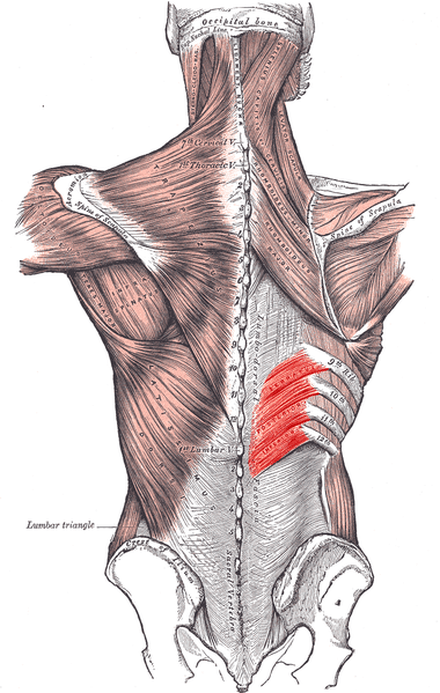 |
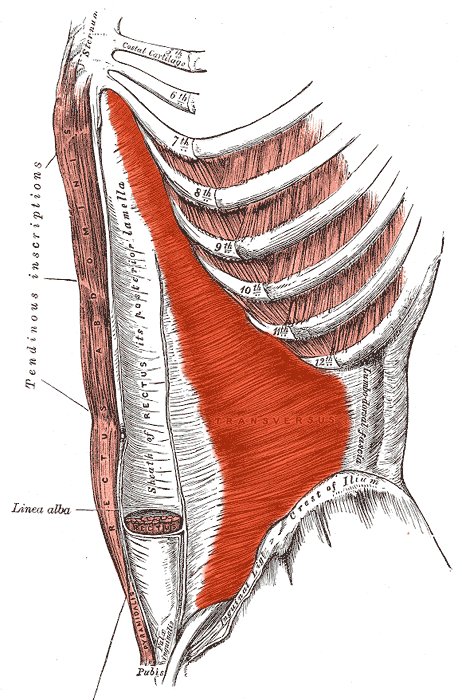 |
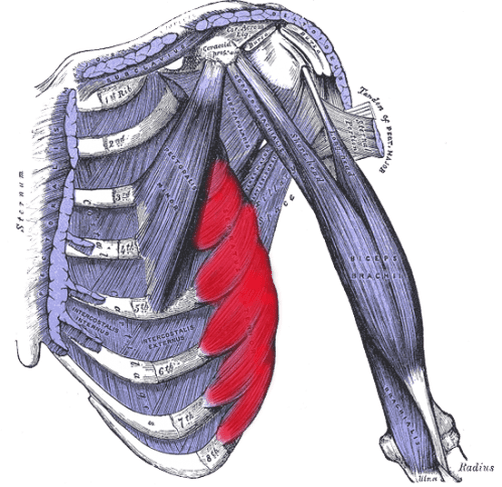 |
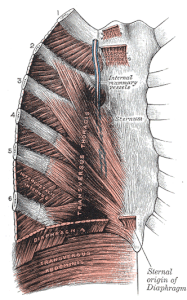 |
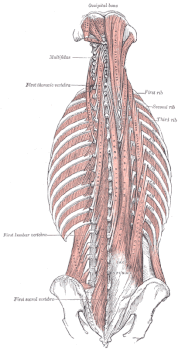 |
Rib injuries as well as rib pain of an unknown origin are common. Dog common. Just yesterday I treated a man who had torn a rib fascia while coughing (HERE). He is a tough guy, but his pain was absolutely wearing him down both physically and emotionally. That’s one of the things about rib pain — it tends to be severe. He knew what had caused his pain, but more often than not, I see patients who have no idea what caused their rib injury / rib pain.
Rib tissues can be injured in a variety of ways. Coughing and sneezing are a couple of common ones. Throwing is also a fairly common way to injure these tissues (especially throwing something really heavy like a chunk of firewood or a bale of hay as you twist and rotate your body). As you can imagine, rib injuries are common in SPORTS.
Not only are they found in contact sports like football, but they are also found frequently in baseball, softball, and even golf (swinging a bat or golf club can tear rib tissues and put even the ‘heavy hitters’ on the D.L.). If you suspect that you have injured the Connective Tissues surrounding / attaching to your ribs, give us a call. In the meantime, HERE and HERE are a couple of my other blog posts on Rib Tissue Pain.
